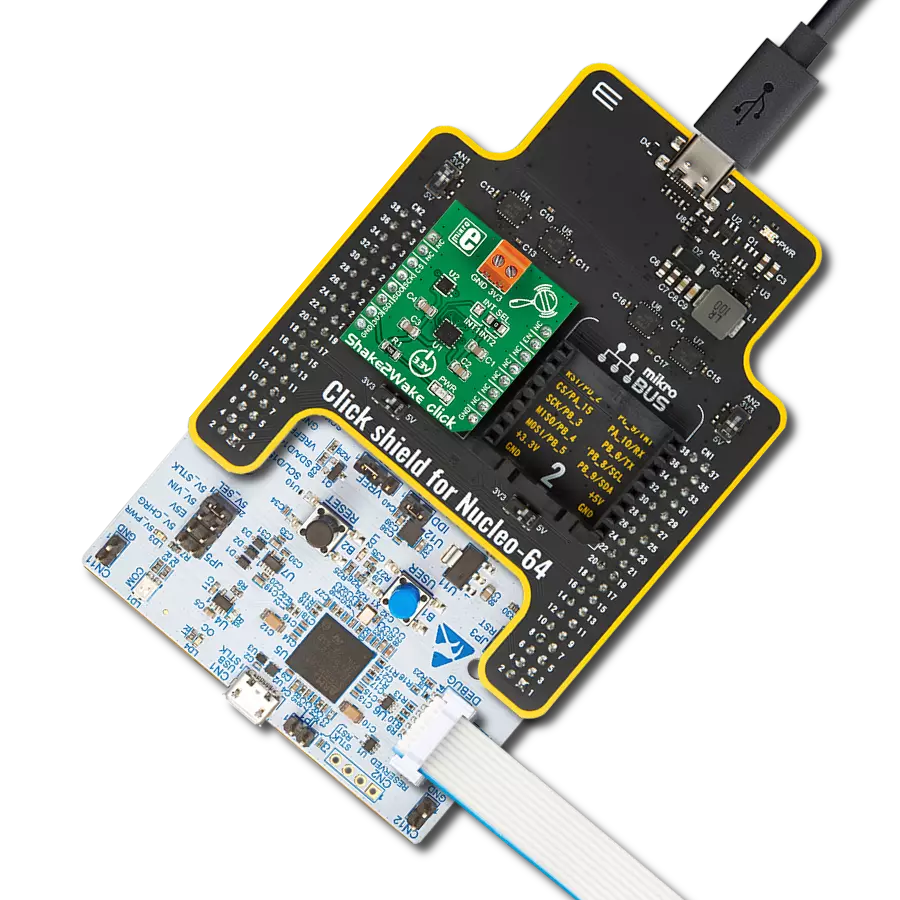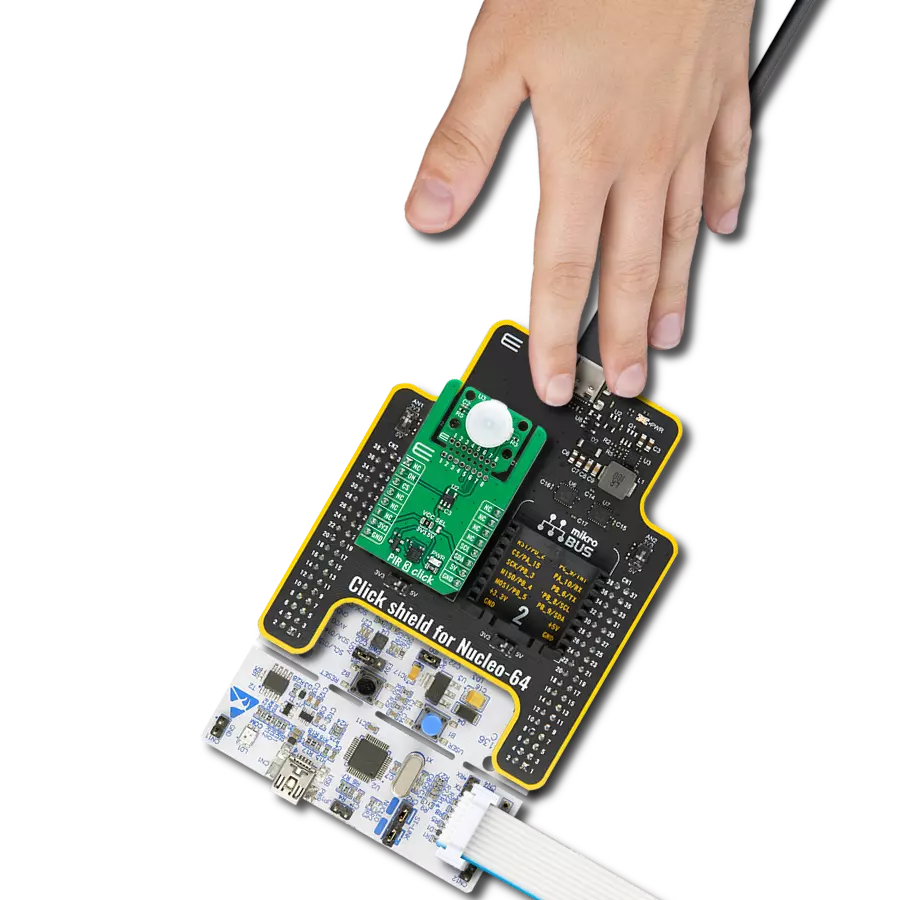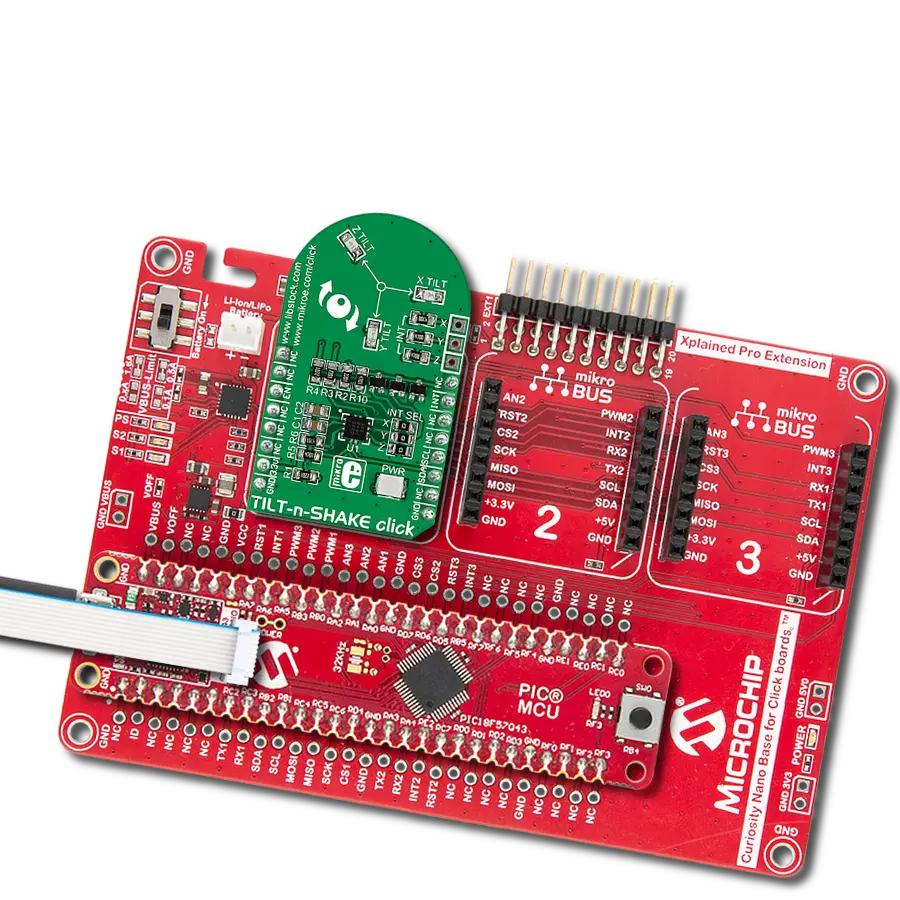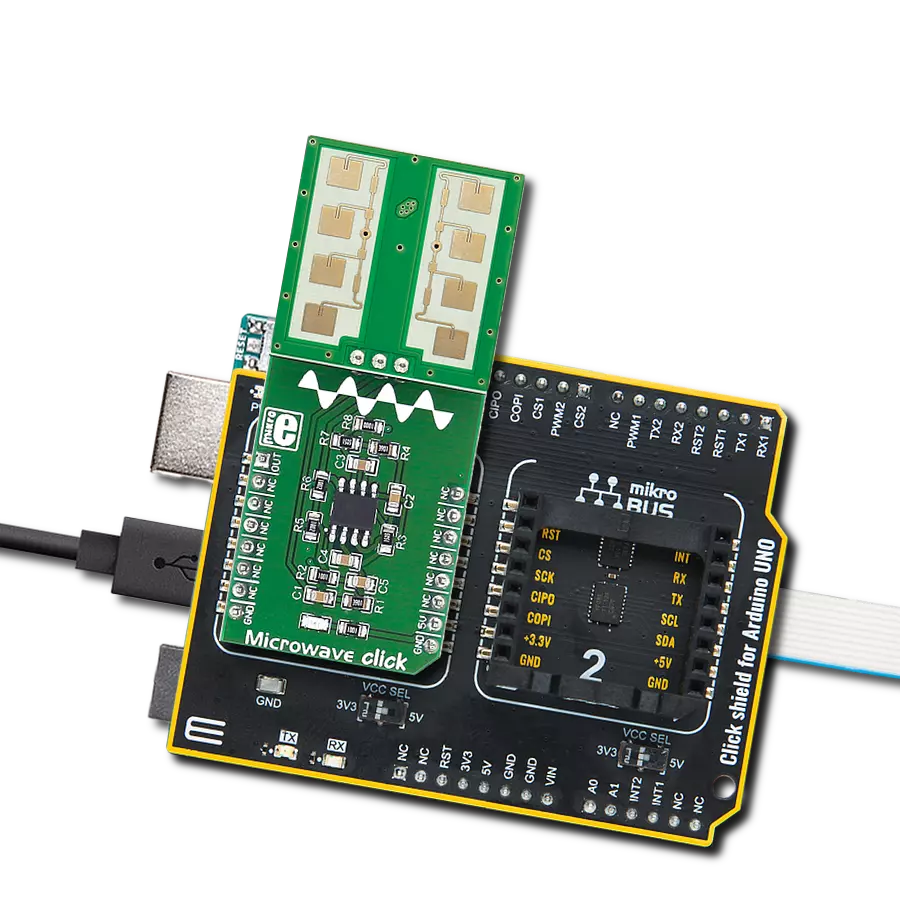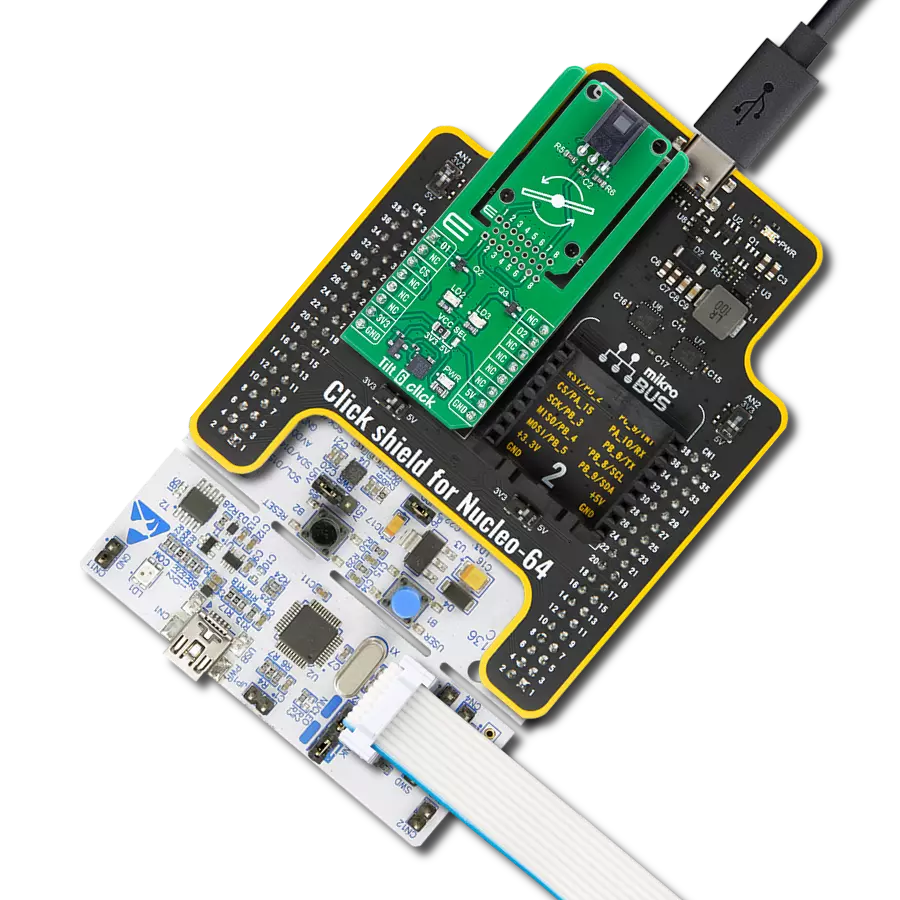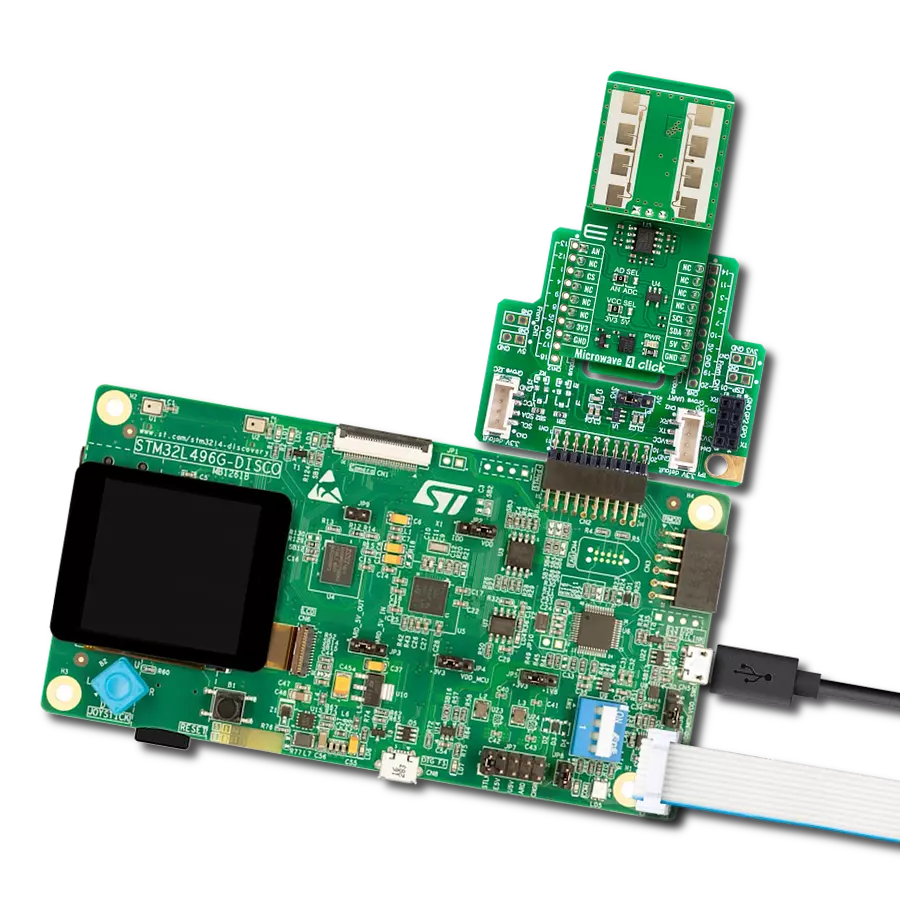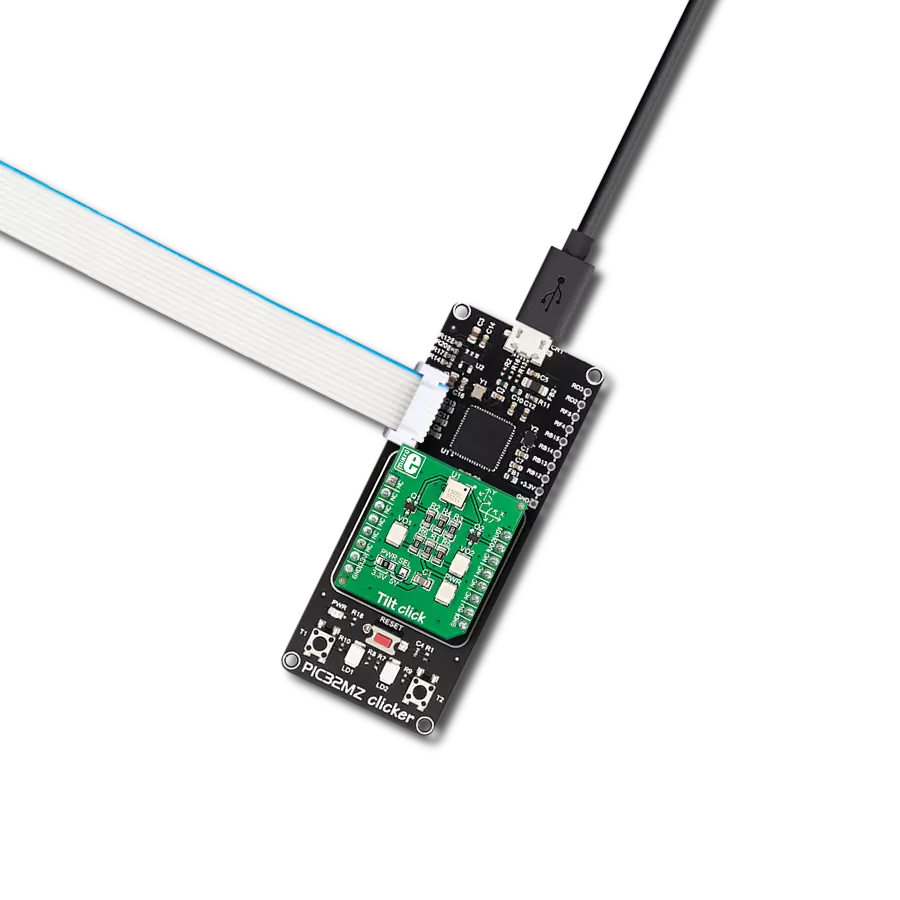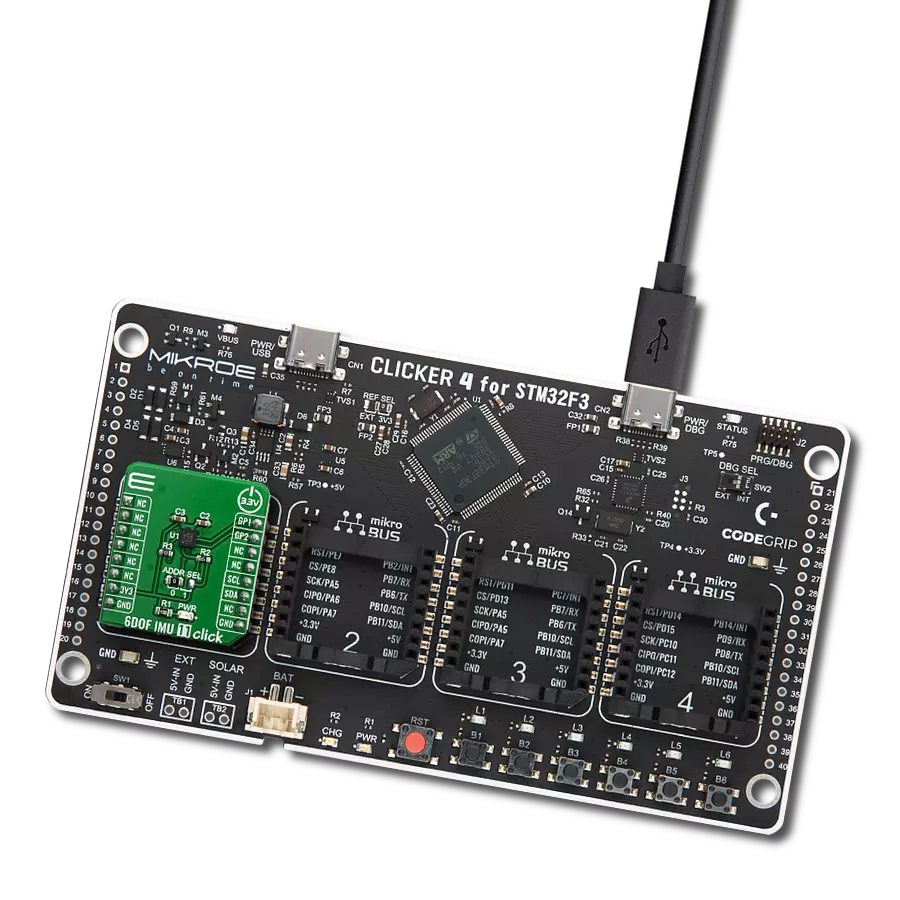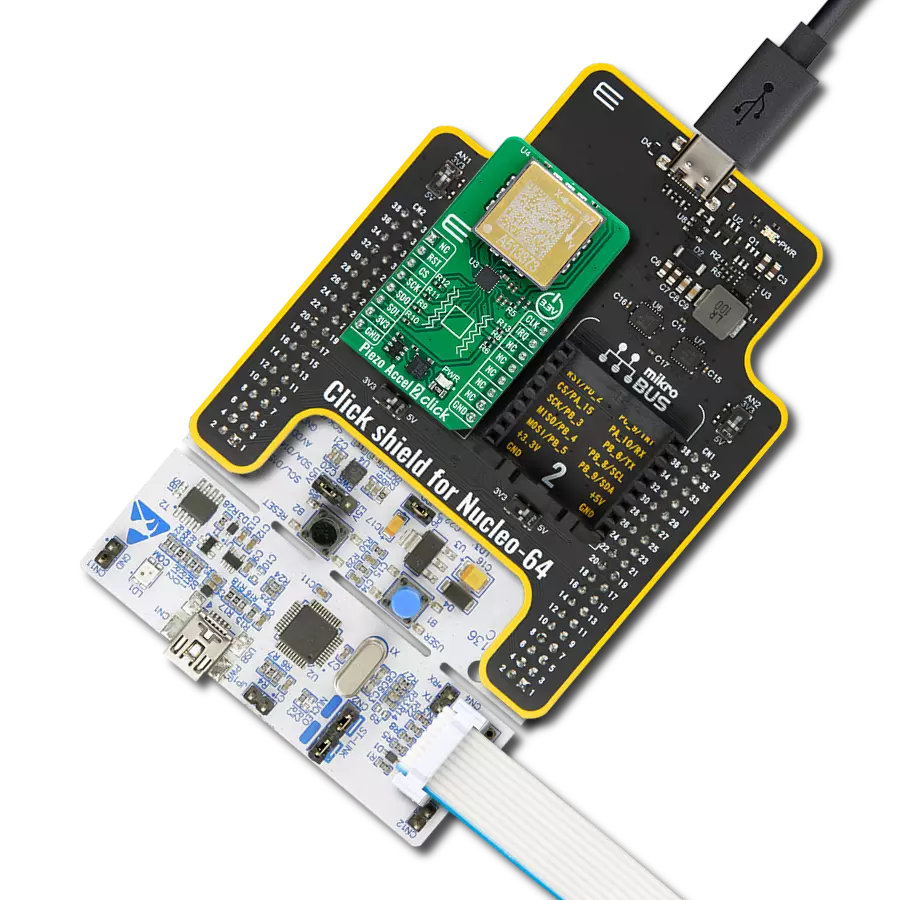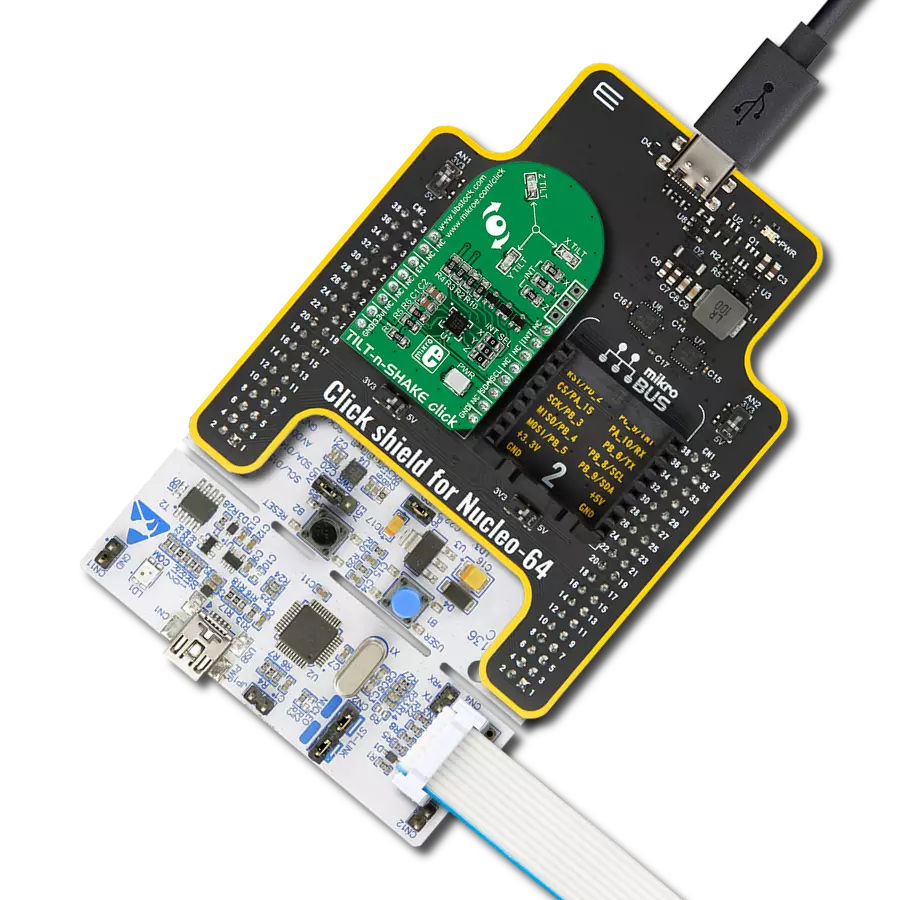Revolutionize your solution by incorporating precise movement and rotation detection
A
A
Hardware Overview
How does it work?
MPU 9DOF Click is based on the MPU-9250, a 9-axis MotionTracking device combining a 3-axis gyroscope, accelerometer, magnetometer, and a Digital Motion Processor™ (DMP) from InvenSense. The MPU-9250 features three 16-bit ADCs for digitizing each part (gyroscope, accelerometer, and magnetometer) outputs, low power, and high performance. For precision tracking of both fast and slow motions, the MPU-9250 features a user-programmable full-scale gyroscope range of ±250, ±500, ±1000, and ±2000dps, and an accelerometer range of ±2g, ±4g, ±8g, and ±16g, and a magnetometer range of ±4800μT. The embedded DMP engine supports advanced MotionProcessing and low-power
functions, such as gesture recognition using programmable interrupts, alongside pedometer functionality allowing the host MCU to sleep while the DMP maintains the step count. The DMP acquires data from accelerometers, gyroscopes, and magnetometers and processes the data, which can be read from the DMP's registers or can be buffered in a 512-byte FIFO. In addition to all the above features, the DMP can generate an interrupt, routed to the INT pin of the mikroBUS™ socket, which can wake up the host MCU from Suspend mode. MPU 9DOF Click allows the use of both I2C and SPI interfaces with a maximum frequency of 400kHz for I2C and 1MHz for SPI communication. The selection can be made by
positioning SMD jumpers labeled SPI I2C in an appropriate position. Note that all the jumpers' positions must be on the same side, or the Click board™ may become unresponsive. While the I2C interface is selected, the MPU-9250 allows choosing the least significant bit (LSB) of its I2C slave address using the SMD jumper labeled ADDR SEL. This Click board™ can be operated only with a 3.3V logic voltage level. The board must perform appropriate logic voltage level conversion before using MCUs with different logic levels. However, the Click board™ comes equipped with a library containing functions and an example code that can be used as a reference for further development.
Features overview
Development board
PIC18F57Q43 Curiosity Nano evaluation kit is a cutting-edge hardware platform designed to evaluate microcontrollers within the PIC18-Q43 family. Central to its design is the inclusion of the powerful PIC18F57Q43 microcontroller (MCU), offering advanced functionalities and robust performance. Key features of this evaluation kit include a yellow user LED and a responsive
mechanical user switch, providing seamless interaction and testing. The provision for a 32.768kHz crystal footprint ensures precision timing capabilities. With an onboard debugger boasting a green power and status LED, programming and debugging become intuitive and efficient. Further enhancing its utility is the Virtual serial port (CDC) and a debug GPIO channel (DGI
GPIO), offering extensive connectivity options. Powered via USB, this kit boasts an adjustable target voltage feature facilitated by the MIC5353 LDO regulator, ensuring stable operation with an output voltage ranging from 1.8V to 5.1V, with a maximum output current of 500mA, subject to ambient temperature and voltage constraints.
Microcontroller Overview
MCU Card / MCU

Architecture
PIC
MCU Memory (KB)
128
Silicon Vendor
Microchip
Pin count
48
RAM (Bytes)
8196
You complete me!
Accessories
Curiosity Nano Base for Click boards is a versatile hardware extension platform created to streamline the integration between Curiosity Nano kits and extension boards, tailored explicitly for the mikroBUS™-standardized Click boards and Xplained Pro extension boards. This innovative base board (shield) offers seamless connectivity and expansion possibilities, simplifying experimentation and development. Key features include USB power compatibility from the Curiosity Nano kit, alongside an alternative external power input option for enhanced flexibility. The onboard Li-Ion/LiPo charger and management circuit ensure smooth operation for battery-powered applications, simplifying usage and management. Moreover, the base incorporates a fixed 3.3V PSU dedicated to target and mikroBUS™ power rails, alongside a fixed 5.0V boost converter catering to 5V power rails of mikroBUS™ sockets, providing stable power delivery for various connected devices.
Used MCU Pins
mikroBUS™ mapper
Take a closer look
Click board™ Schematic

Step by step
Project assembly
Track your results in real time
Application Output
1. Application Output - In Debug mode, the 'Application Output' window enables real-time data monitoring, offering direct insight into execution results. Ensure proper data display by configuring the environment correctly using the provided tutorial.

2. UART Terminal - Use the UART Terminal to monitor data transmission via a USB to UART converter, allowing direct communication between the Click board™ and your development system. Configure the baud rate and other serial settings according to your project's requirements to ensure proper functionality. For step-by-step setup instructions, refer to the provided tutorial.

3. Plot Output - The Plot feature offers a powerful way to visualize real-time sensor data, enabling trend analysis, debugging, and comparison of multiple data points. To set it up correctly, follow the provided tutorial, which includes a step-by-step example of using the Plot feature to display Click board™ readings. To use the Plot feature in your code, use the function: plot(*insert_graph_name*, variable_name);. This is a general format, and it is up to the user to replace 'insert_graph_name' with the actual graph name and 'variable_name' with the parameter to be displayed.

Software Support
Library Description
This library contains API for MPU 9DOF Click driver.
Key functions:
mpu9dof_read_accel- Function read Accel X-axis, Y-axis and Z-axismpu9dof_read_gyro- Function read Gyro X-axis, Y-axis and Z-axismpu9dof_read_mag- Function read Magnetometar X-axis, Y-axis and Z-axis
Open Source
Code example
The complete application code and a ready-to-use project are available through the NECTO Studio Package Manager for direct installation in the NECTO Studio. The application code can also be found on the MIKROE GitHub account.
/*!
* \file
* \brief Mpu9Dof Click example
*
* # Description
* MPU 9DOF Click carries the world’s first 9-axis Motion Tracking device. It comprises two chips: one that contains
* a 3-axis accelerometer, a 3-axis gyroscope, and a DMP (digital motion processor);
* the other is a 3-axis digital compass.
*
* The demo application is composed of two sections :
*
* ## Application Init
* Initialization driver enable's - I2C, initialize MPU-9150 XL G & MPU-9150 MAG and start write log.
*
* ## Application Task
* This is a example which demonstrates the use of MPU 9DOF Click board.
* Measured accel, gyro and magnetometar coordinates values ( X, Y, Z )
* and temperature value in degrees celsius [ �C ] are being sent to the uart where you can track their changes.
* All data logs on usb uart for aproximetly every 1 sec.
*
* \author MikroE Team
*
*/
// ------------------------------------------------------------------- INCLUDES
#include "board.h"
#include "log.h"
#include "mpu9dof.h"
// ------------------------------------------------------------------ VARIABLES
static mpu9dof_t mpu9dof;
static log_t logger;
static int16_t accel_x;
static int16_t accel_y;
static int16_t accel_z;
static int16_t gyro_x;
static int16_t gyro_y;
static int16_t gyro_z;
static int16_t mag_x;
static int16_t mag_y;
static int16_t mag_z;
static float temperature;
// ------------------------------------------------------ APPLICATION FUNCTIONS
void application_init ( void )
{
log_cfg_t log_cfg;
mpu9dof_cfg_t cfg;
/**
* Logger initialization.
* Default baud rate: 115200
* Default log level: LOG_LEVEL_DEBUG
* @note If USB_UART_RX and USB_UART_TX
* are defined as HAL_PIN_NC, you will
* need to define them manually for log to work.
* See @b LOG_MAP_USB_UART macro definition for detailed explanation.
*/
LOG_MAP_USB_UART( log_cfg );
log_init( &logger, &log_cfg );
log_info( &logger, "---- Application Init ----" );
// Click initialization.
mpu9dof_cfg_setup( &cfg );
MPU9DOF_MAP_MIKROBUS( cfg, MIKROBUS_1 );
mpu9dof_init( &mpu9dof, &cfg );
Delay_10ms( );
mpu9dof_default_cfg ( &mpu9dof );
}
void application_task ( void )
{
mpu9dof_read_accel( &mpu9dof, &accel_x, &accel_y, &accel_z );
Delay_10ms( );
mpu9dof_read_gyro( &mpu9dof, &gyro_x, &gyro_y, &gyro_z );
Delay_10ms( );
temperature = mpu9dof_read_temperature( &mpu9dof );
Delay_10ms( );
mpu9dof_read_mag( &mpu9dof, &mag_x, &mag_y, &mag_z );
Delay_10ms( );
log_printf( &logger, " Accel X : %d | Gyro X : %d | Mag X : %d \r\n", accel_x, gyro_x, mag_x );
log_printf( &logger, " Accel Y : %d | Gyro Y : %d | Mag Y : %d \r\n", accel_y, gyro_y, mag_y );
log_printf( &logger, " Accel Z : %d | Gyro Z : %d | Mag Z : %d \r\n", accel_z, gyro_z, mag_z );
Delay_10ms( );
log_printf( &logger, "- - - - - - - - - - - - - - - - - - - - - - - - - - - - - -\r\n" );
Delay_10ms( );
log_printf( &logger, "Temperature: %.2f C\r\n", temperature );
Delay_100ms( );
log_printf( &logger, "- - - - - - - - - - - - - - - - - - - - - - - - - - - - - -\r\n" );
log_printf( &logger, "\r\n");
Delay_ms ( 1000 );
}
int main ( void )
{
/* Do not remove this line or clock might not be set correctly. */
#ifdef PREINIT_SUPPORTED
preinit();
#endif
application_init( );
for ( ; ; )
{
application_task( );
}
return 0;
}
// ------------------------------------------------------------------------ END



















